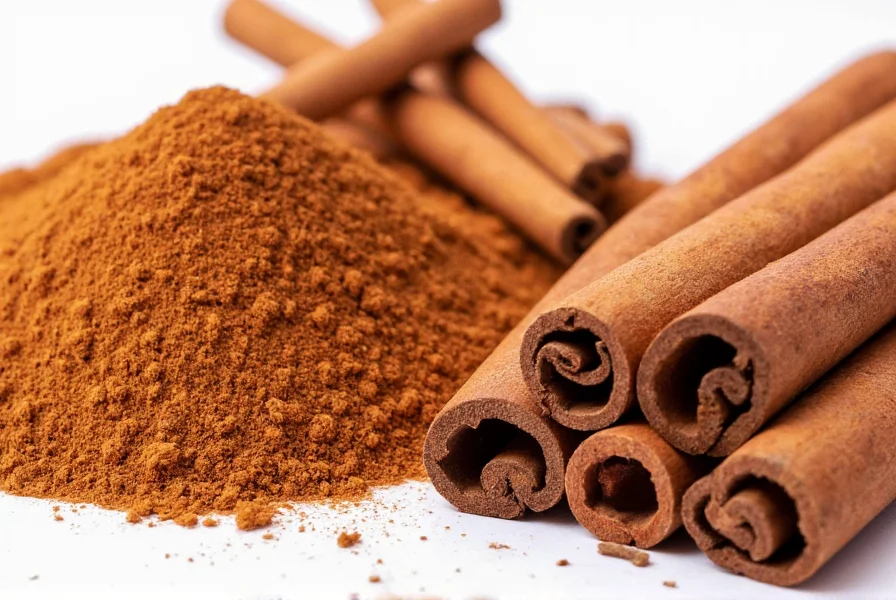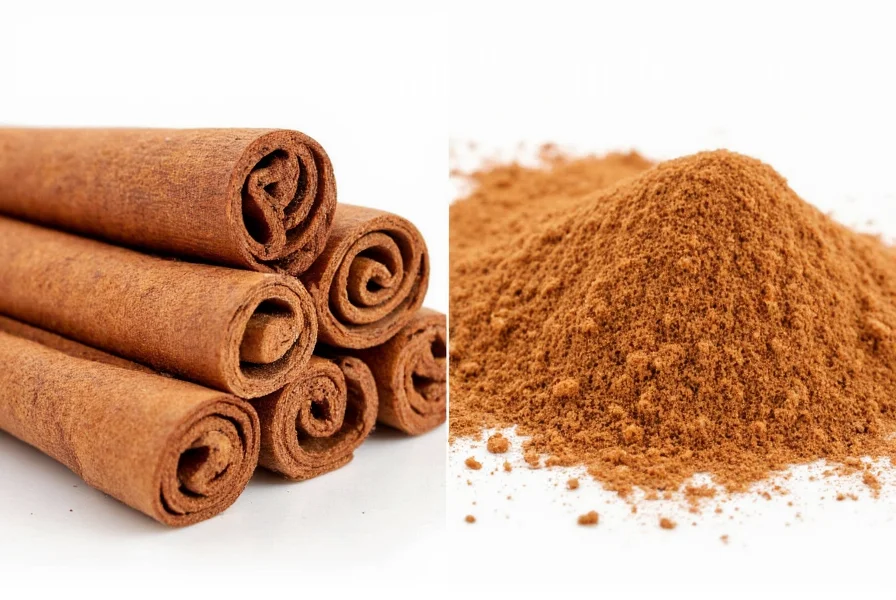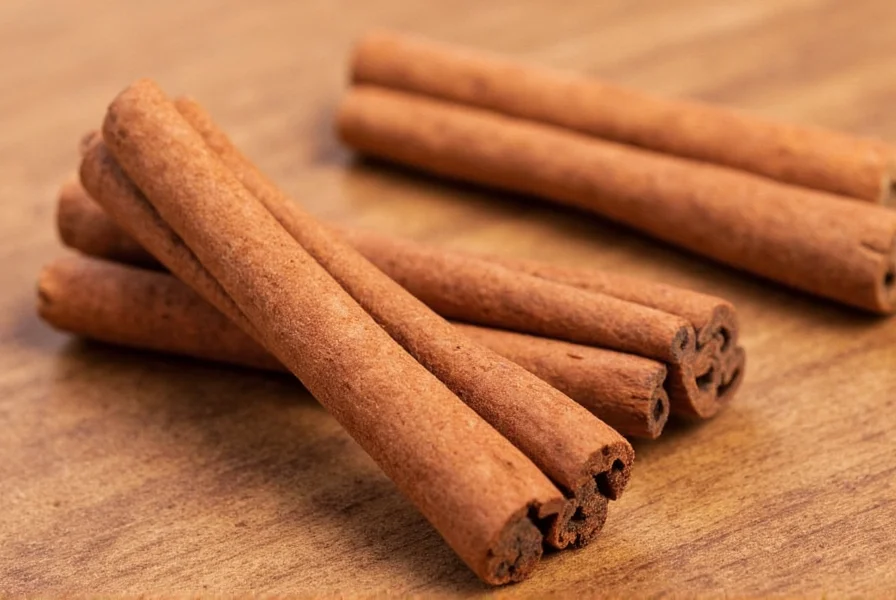When exploring the world of spices, understanding the difference between true cinnamon and its more common counterpart is essential for both flavor enthusiasts and health-conscious consumers. True cinnamon (Cinnamomum verum), often called Ceylon cinnamon, represents the authentic variety with a centuries-old history in traditional medicine and global cuisine. This delicate spice offers distinct advantages over the cassia cinnamon that dominates supermarket shelves worldwide.
What Makes Cinnamon "True"?
The term "true cinnamon" specifically refers to Cinnamomum verum, which translates to "true cinnamon" in Latin. Native to Sri Lanka (formerly Ceylon), this variety has been prized since ancient times. Historical records show Egyptian pharaohs using Ceylon cinnamon as early as 2000 BCE, and it was considered so valuable that European explorers sought it alongside gold and jewels.
Physical Characteristics of True Cinnamon
True cinnamon displays distinctive physical properties that set it apart from cassia varieties:
| Characteristic | True Cinnamon (Ceylon) | Cassia Cinnamon |
|---|---|---|
| Color | Light tan to pale brown | Dark reddish-brown |
| Texture | Multiple thin, papery layers | Single thick, hard layer |
| Flavor Profile | Delicate, sweet, citrusy notes | Strong, spicy, slightly bitter |
| Coumarin Content | Approximately 0.017g/kg | Approximately 63.34g/kg |
When examining cinnamon sticks, true cinnamon forms a distinctive "quill" shape with multiple delicate layers that easily crumble when pressed. Cassia cinnamon, by contrast, forms a single thick, hard scroll that resists breaking.

Health Implications: Why the Distinction Matters
The coumarin content difference represents the most significant health consideration between these varieties. Coumarin, a naturally occurring compound, can cause liver damage when consumed in excess. The European Food Safety Authority recommends a maximum daily intake of 0.1 mg of coumarin per kilogram of body weight.
For a 150-pound adult, this translates to:
- True cinnamon: Can safely consume up to 4-5 teaspoons daily
- Cassia cinnamon: Limited to approximately 1 teaspoon daily
Research published in the Journal of Agricultural and Food Chemistry confirms that Ceylon cinnamon contains 99% less coumarin than cassia varieties, making it the preferred choice for regular consumption, particularly for individuals with liver conditions or those using cinnamon therapeutically.
Identifying Authentic True Cinnamon
Spotting genuine Ceylon cinnamon requires attention to several key indicators:
- Check the label: Look for "Cinnamomum verum," "Cinnamomum zeylanicum," or "Ceylon cinnamon"
- Examine the sticks: True cinnamon forms thin, multi-layered quills that break easily
- Smell the spice: Ceylon cinnamon has a sweeter, more delicate aroma with citrus notes
- Taste test: It should be subtly sweet without the harsh bite of cassia
- Price point: Authentic Ceylon cinnamon typically costs 2-3 times more than cassia
Unfortunately, many products labeled simply as "cinnamon" contain cassia. The U.S. Food and Drug Administration permits this labeling practice, creating confusion for consumers seeking the genuine article.
Culinary Applications and Recommendations
True cinnamon's delicate flavor profile makes it particularly suitable for:
- Delicate desserts like custards, flans, and rice puddings
- Fruit-based dishes and compotes
- Lighter baked goods such as angel food cake
- Traditional Sri Lankan and Mexican recipes
- Cold preparations like ice cream and yogurt
Chefs specializing in authentic Mexican cuisine prefer Ceylon cinnamon for traditional chocolate preparations, where its subtle sweetness enhances rather than overpowers the delicate cocoa flavors. In contrast, cassia's stronger profile works better in hearty dishes like curries, stews, and spiced wines.
Purchasing and Storage Guidelines
When shopping for true cinnamon, consider these recommendations:
- Seek specialty spice merchants or reputable online retailers specializing in authentic ingredients
- Look for certifications from organizations like Fair Trade or organic certification bodies
- Purchase whole sticks rather than powder for maximum freshness and authenticity verification
- Store in an airtight container away from light and heat
- Use within 6-12 months for optimal flavor (whole sticks last longer than ground)

Historical Significance and Modern Production
Sri Lanka remains the world's primary producer of true cinnamon, accounting for approximately 80% of global supply. The harvesting process remains largely unchanged for centuries: workers carefully peel the inner bark from young cinnamon trees, then roll the delicate strips into characteristic quills as they dry.
This labor-intensive process contributes to Ceylon cinnamon's higher cost but preserves the delicate flavor compounds that make it distinctive. Unlike cassia, which often comes from older tree bark, true cinnamon uses only the tender inner bark of new growth, resulting in its characteristic thin, layered structure.
Conclusion
Understanding the difference between true cinnamon and cassia varieties empowers consumers to make informed choices based on both flavor preferences and health considerations. While cassia cinnamon remains perfectly safe in moderation, those incorporating cinnamon regularly into their diet—particularly for potential health benefits—should consider switching to authentic Ceylon cinnamon. Its delicate flavor profile, lower coumarin content, and rich historical significance make it a worthwhile investment for culinary enthusiasts and health-conscious consumers alike.
What's the main difference between true cinnamon and regular cinnamon?
True cinnamon (Ceylon cinnamon) comes from the Cinnamomum verum tree and has multiple thin, papery layers, a lighter color, sweeter flavor, and significantly lower coumarin content. Regular cinnamon typically refers to cassia cinnamon, which has a single thick, hard layer, darker color, stronger flavor, and much higher coumarin levels.
Is true cinnamon better for you than cassia cinnamon?
True cinnamon contains approximately 99% less coumarin than cassia cinnamon, making it safer for regular consumption. While both varieties offer similar antioxidant benefits, the significantly lower coumarin content in Ceylon cinnamon reduces potential liver health risks associated with long-term, high-volume consumption.
How can I tell if I'm buying real Ceylon cinnamon?
Check for specific labeling that says "Ceylon cinnamon," "Cinnamomum verum," or "true cinnamon." Authentic Ceylon cinnamon forms thin, multi-layered quills that break easily, has a lighter tan color, and offers a sweeter, more delicate aroma. It typically costs 2-3 times more than cassia cinnamon due to its labor-intensive harvesting process.
Can I substitute true cinnamon for cassia in recipes?
Yes, but with flavor adjustments. True cinnamon has a more delicate flavor, so you may need to use 25-50% more to achieve similar intensity. It works best in delicate dishes like custards, fruit desserts, and light baked goods. For heartier dishes like curries or spiced wines, cassia's stronger flavor might be preferable, or you could supplement Ceylon cinnamon with additional warming spices.
Why is true cinnamon more expensive than regular cinnamon?
True cinnamon commands a higher price due to its labor-intensive harvesting process, lower yield per tree, and limited growing regions. Harvesters must carefully peel only the tender inner bark from young shoots, creating the characteristic thin, layered quills. Sri Lanka produces about 80% of the world's true cinnamon, and the meticulous hand-processing contributes significantly to its premium cost compared to the mechanically harvested cassia cinnamon.











 浙公网安备
33010002000092号
浙公网安备
33010002000092号 浙B2-20120091-4
浙B2-20120091-4